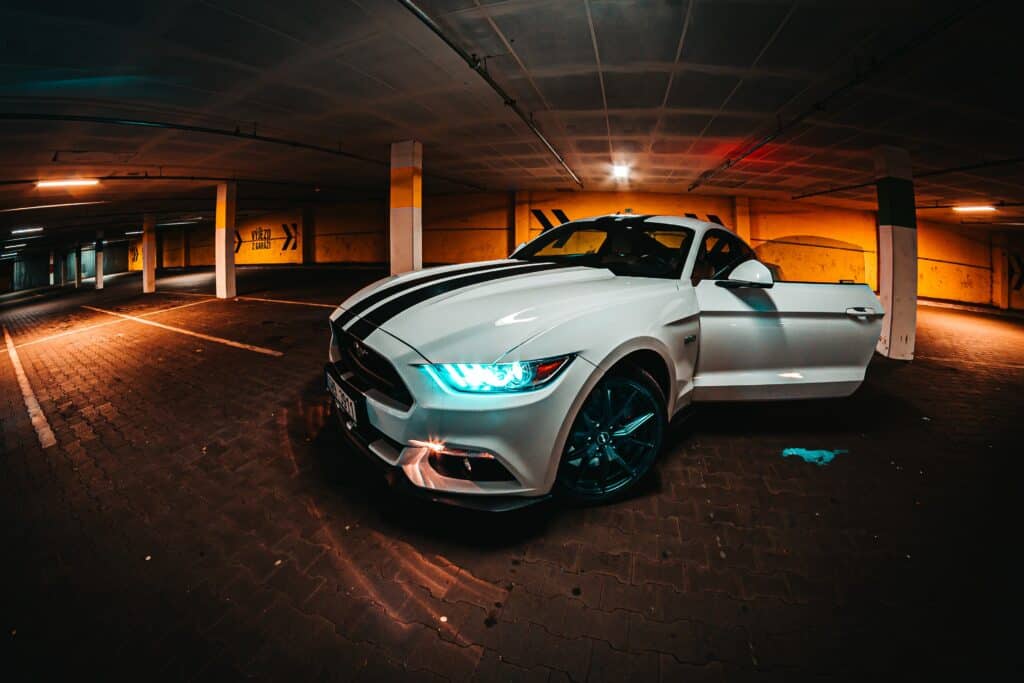The term ‘distortion’ appears fairly often in the photography world, whether it be by photographers wishing to eliminate this or to embrace it! Distortion refers to warped elements in a photograph caused by a lens. Remember, the final look of an image is dependent primarily on the lens itself, and as such, distortion is a lens situation.
However, there are two different types of distortion: optical and perspective. One can be altered and the other cannot! Distortion certainly has its ups and downs, and although the word sounds quite negative, it really doesn’t have to be. Some lenses are specially made to distort! The key to either preventing distortion or utilizing it to its advantage has to do with understanding why distortion happens.
Why Does Distortion Happen?
Why distortion happens depends on the type of distortion. But to start, distortion results due to the construction or use of a lens.
You see, the way that lenses work is fairly practical (nothing too fancy on the technology side):
Lenses have a series of glass elements in them, including the glass at the very front that you see. This practical engineering system works by bending light. This action projects an image onto the camera sensor, therefore creating your image.
Now, pair the above fact with that of there being different types of lenses. Lenses come in various focal lengths. In layman terms, the focal length is a description of the lens that tells you what angle of view and magnification you can capture. Angle of view is how much or how little you can see in your picture.
If you are using a lens with a wider angle of view, you’re going to encounter a design that requires the glass inside of the lens to be curved in shape. The curved shape allows the lens to capture a wide view of the scene, necessary for the focal length. If you’ve ever looked at a fishbowl and seen the center reflection cause weird proportions, then you’re about to witness the same with a lens’s curved glass element!
The curve means that the objects at the edge of the image are at a different distance from the lens than those same objects at the center of the lens. That difference means the objects at the edge of the frame aren’t enlarged as much as the objects in the center. This results in what we know as Barrel Distortion. Barrel Distortion is a type of Optical Distortion.
Optical Distortion is all kinds of distortion that are exclusively a result of optical design, when special lens elements are used to reduce spherical and other aberrations. In short, optical distortion is a lens ‘error’ (to those who see it as a problem). Essentially, if a lens alters the appearance of your subject, it has distortion.

The second type of distortion is known as Perspective Distortion, which also has to do with the lens- but instead of being a part of the lens’s design, it’s just how the lens itself works. Perspective Distortion is when distortion is caused by the subject being too close to the lens (therefore appearing larger). When projecting three dimensional space into a two dimensional image, if the subject is too close to the camera, it can appear disproportionately large or distorted when compared to the objects in the background.

What Lenses Have the Most Distortion?
The lenses with the most optical distortion are wide angle lenses and ultra wide angle lenses.
Ultra wide angle lenses have a focal length of anywhere from 10mm to 24mm. Often used by real estate photographers and landscape photographers, these lenses can make small rooms look large and take in the full epic view of a landscape.
Ultra wide angles are often seen as fisheye lenses, or lenses that several curve the center of the shot.
Wide angle lenses have a field of view of 24mm to 35mm and are not quite as wide as the ultra wides, but are still quite wide.
Rectilinear and Curvilinear Lenses
With the above being said that wide angle lenses have the most distortion, this isn’t true for all wide angle lenses. Only wide angle lenses that are curvilinear have distortion to them. Let me explain:
Lenses can be designed to either be rectilinear or curvilinear.
Rectilinear lenses are intended to reduce distortion by stretching objects to make them appear straight, especially towards the edges of the frame.

Curvilinear lenses want that curved distortion, and as a result, they don’t stretch anything- therefore causing images to have their straight lines curved, like a fishbowl.

You can see this starkly with lenses in the 35mm range! Some 35mm feature minimal distortion and completely straight lines while others are curved on purpose. You can tell which lens you have based on how much the glass in the front of the lens busts out in the center.
Telephoto and Zoom Lenses- Is That Distortion?
Many think of distortion when proportions are several altered. But believe it or not, telephoto lenses are distortion lenses too, but not in the way you may think! They do not distort the proportions of your subject, the distortion is the fact that you can zoom in closer than your eye can actually see naturally.
Telephoto and zoom lenses are victims of a type of Optical Distortion known as Pincushion Distortion. The magnification of the lens is greatest at the center, so the edges of the photo can appear to bend in, rather than out.
How to Use Distortion to Your Advantage
There are many reasons that photographers may favor distortion in their lenses. The most common use of distortion lenses is in real estate photography, because wide angle distortion will cause interiors to appear much larger than they actually are. This is because real estate photographers want to capture the entire spanse of a room in one shot! This can attract potential home buyers to an open house to check out a property.

Distortion can also produce some really fun and cool images when done right. The key is for the subject to still have a flatter-style distortion.
For example, the Japanese brand ‘THE DOG and Friends’ became famous for photographs of animals with bobble-head appearances, created with an ultra wide angle lens.
A good use of funky wide angle lenses with people is to have your subject lean into the camera lens and stretch their arms out towards the camera. You can take advantage of both Optical Distortion and Perspective Distortion simultaneously this way.
How To Prevent Distortion
Likewise, if distortion isn’t really your thing, there are ways to prevent it from occurring. Besides swapping equipment out for something that doesn’t distort, here are two common solutions:
1. Be More Distant To Your Subject
Remember that the issue tends to stem from the subject being too close to the lens and focused on the center of the frame. Move yourself further away from your subject and the distortion should have a much lesser effect.
2. Use Post Processing to Fix Distortion
You can use photo editing programs to help fix some of the distortion. If you’re an Adobe Photoshop or Adobe Lightroom user, most distortions by using data about the lens itself which is stored in the photo’s metadata, you can simply select the option under the Lens Corrections panel that says “Enable Profile Corrections.” This should fix the perspective distortion automatically.
In conclusion, in order to utilize or eliminate this optic or perspective effect, you must first understand how it works. With this knowledge now in your photography toolbelt, you’ll be able to dominate distortion!
